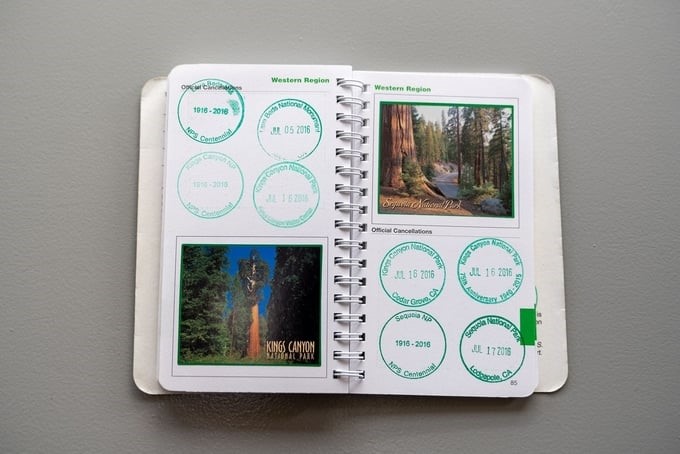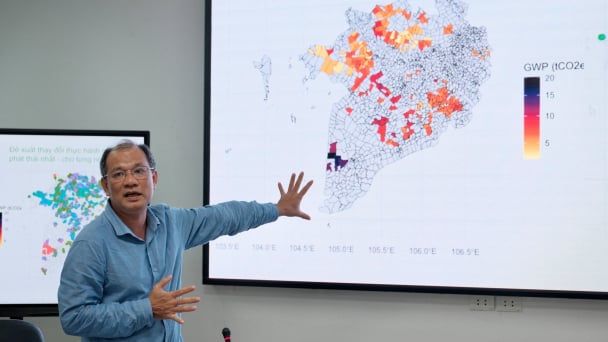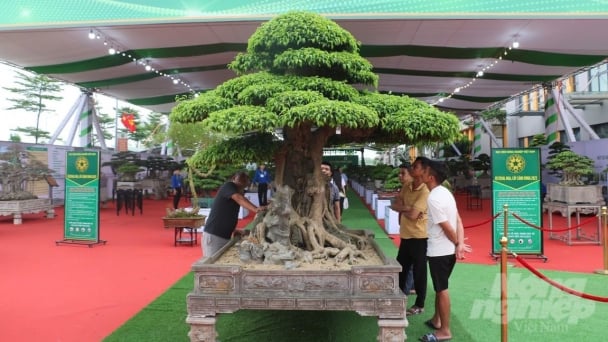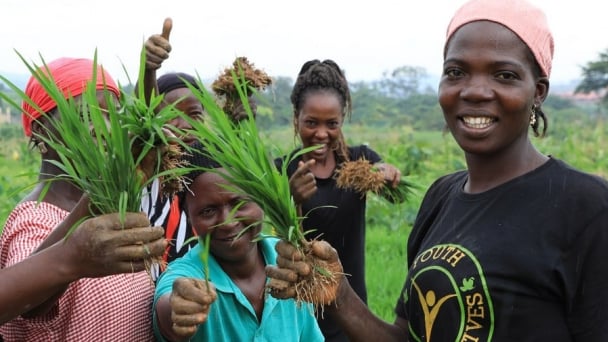May 14, 2025 | 16:55 GMT +7
May 14, 2025 | 16:55 GMT +7
Hotline: 0913.378.918
May 14, 2025 | 16:55 GMT +7
Hotline: 0913.378.918
Speaking at the Forum on "Public-Private Cooperation in Developing the Multi-Use Value of Forest Ecosystems," Minister Le Minh Hoan regarded the development of the National Park Passport as a way to bring forests closer to urban areas in the context of many people still being unfamiliar with the forest.
Vietnam Agriculture Newspaper excerpted research documents of some experts to refer to this model from countries that have implemented it as an approach to applying this still-new issue in Vietnam.

The US's classical National Park Passport has a 6" x 4" soft cover, a spiral spine, 112 pages, and is small enough to fit in a pocket. This passport also comes with a fold-out map with full information on all national parks across the country and is divided into nine color-coded regions, making it easy for tourists to use.
The US is a pioneering country in applying the National Park Passport model. This program has been implemented by the US National Park Service (NPS) since 1986 with the purpose of encouraging people to explore the country's extremely diverse national park system.
Accordingly, a National Park Passport is a small book, similar in size to a regular passport. Each page in the book is devoted to a national park, with basic information and space to stamp confirmation of a visit. Tourists can purchase this passport at most national parks or online (managed by the NPS) for USD 9.95.
When visiting a national park, tourists present their passports at the tourist information center to get a confirmation stamp. Each national park has its own seal, usually a typical symbol of that national park (logo). Collecting seals becomes an interesting activity, motivating tourists to explore more national parks (the US has 423 national parks).
Thailand is the first Southeast Asian country to apply the national park passport model, starting in 2019. This program is managed by the Department of National Parks, Wildlife and Plant Conservation of Thailand.
Thailand's National Park Passport has a similar design to the US's one but is printed in both Thai and English to serve international tourists. The passport includes information about Thailand's 155 national parks, along with pages for stamping confirmation.
This program not only encourages tourism but also raises awareness of nature conservation and the core values and activities of national parks. Tourists are provided with information about endemic animal and plant species and the importance of each national park.
India started deploying the National Park Passport in 2020 as part of its sustainable tourism development strategy. The program is managed by the Indian Ministry of Tourism in collaboration with the National Tiger Conservation Authority (NTCA).
India's National Park Passport has its own unique feature of focusing on tiger reserves (55 tiger reserves). The passport not only has space for stamping confirmation but also provides detailed information about India's tiger species and conservation efforts.
This program combines the goals of tourism development and wildlife conservation. Tourists are not only encouraged to visit many national parks, but they also raise awareness of the importance of protecting tigers and their habitat.

Two pages filled with stamps in an American's National Park Passport.
According to experts, firstly regarding flexibility, each country has adjusted the National Park Passport model to suit its own characteristics and goals. Secondly, regarding the combination between tourism and conservation, all three countries use the National Park Passport as a tool to promote sustainable tourism and raise awareness about conservation. Thirdly, regarding education, this passport is not only a collection tool but also provides educational information about nature and the environment. Finally, regarding multi-party participation, the success of the program depends on cooperation between government agencies, conservation organizations, national parks, tourists, and local communities.
These lessons can be applied in Vietnam when considering implementing the National Park Passport model, ensuring that the program will be appropriate to the country's specific context and goals.
The National Park Passport is often designed to be compact and easy to carry. The common size is 14.5 x 10.5 cm, similar to a regular passport. This makes it easy for tourists to carry in their pocket or backpack when traveling.
The cover of the passport is usually made of durable, waterproof material such as hard paper, soft plastic, or water-resistant leather. The cover design usually includes the logo of the management agency, a representative image of the country's signature ecosystem or endemic species, and the name of the “National Park Passport” program.
Passport colors are often chosen to reflect the theme of nature, such as green, brown, or blue, representing forests, soil, and water. This creates a visual impression of the passport's purpose.
The National Park Passport's content is usually structured to include: Personal information where tourists can fill in their contact information; Introduction: a brief description of the purpose and use of the passport; Map: shows the locations of national parks participating in the program; Pages for each national park: Each national park has one or two separate pages; and Notes section: Where tourists can record personal experiences.
Information about national parks often includes the following information: Name and logo of the national park; Geographical location and area; Year of foundation; Outstanding features of ecology and biodiversity; Endemic or rare animal and plant species; Main attractions; Space to stamp confirmation of visit, etc.
In addition to basic information, the National Park Passport may also include: a QR code: Links to a website with more detailed information about each national park; Environmental protection recommendations to guide tourists on how to visit responsibly; Information on conservation programs: A brief introduction to ongoing conservation projects at each national park and space for stickers: Some passports provide stickers instead of, or in addition to, stamps.
By designing the National Park Passport with the above-mentioned elements, it will become a precious keepsake, recording the journey to discover the natural beauty of the country and inspiring tourists to continue exploring other national parks.
The process of buying and using a National Park Passport is often designed to be simple and convenient for tourists. Here is a typical process: Buy passports at the national park's tourist information centers (online through the program's official website or at authorized travel agencies).
When arriving at a national park, tourists present their passports at the information center. The staff will stamp confirmation or provide a sticker for the corresponding page, or tourists will stamp it themselves to have the pride of having surpassed themselves. Tourists can use their passports to visit tourist attractions in the national park (the logo can be stamped on each attraction in that national park if there is a map page to visit the national park's sites and routes).
To ensure the convenient and smooth operation of the National Park Passport program, it is necessary to establish an effective management and operation system. Important activities include: Tracking the number of passports issued and used to ensure transparency and fairness through passport number ordering; Maintaining stamp and label systems to ensure print quality and sustainability. Organizing educational and dissemination programs to raise awareness about environmental and ecological conservation issues. Periodically adding points, commending, and awarding prizes (at the end of the year) to tourists with the highest number of visits to national parks during the year. Cooperating with reputable, branded travel organizations to integrate promotional programs for tourists who have a number of visits to national parks at many different promotional levels.
According to experts, one of the most important factors for the successful implementation of the National Park Passport program is cooperation between all parties: government agencies, conservation organizations, travel units, national parks, tourists, and local communities.
The success of the program depends on each party contributing and supporting each other during the implementation process, not only with rights but also with voluntariness and mutual responsibility.
Next, sharing knowledge and experience between countries with the National Park Passport program is very important so that each country can learn and apply the best methods. Organizing seminars, workshops, or expert training is an effective way to create a mutual learning and development environment.
Regularly evaluating the effectiveness of the National Park Passport program and proposing necessary adjustments is an important factor in ensuring the program always develops and meets the needs of tourists and the community. Listening to feedback and making improvements is key to maintaining the program's appeal.
According to experts, the lessons of countries going ahead are a valuable reference when Vietnam considers implementing the National Park Passport model, ensuring that the program will be appropriate to the country's specific context and goals.
In particular, Vietnam, with its rich and diverse natural beauty, has great potential to implement the National Park Passport program that will help preserve and promote the value of these lands while also generating sustainable income sources for the national park and local communities. The National Park Passport program not only creates opportunities for tourists to explore natural beauty but also encourages sustainable travel behavior.
Translated by Thu Huyen

(VAN) Data from 10,000 farming households will help professionalize production organization and support the implementation of the One Million Hectares Program for High-Quality, Low-Emission Rice Cultivation.

(VAN) FAO Director-General QU Dongyu marks International Day of Plant Health at NENA conference.

(VAN) Deputy Minister of Agriculture and Environment Hoang Trung affirmed that floriculture and ornamental plants are a growing industry that receives significant global attention.

(VAN) The three staple crops dominating modern diets – corn, rice and wheat – are familiar to Americans. However, fourth place is held by a dark horse: cassava.
/2025/05/10/4037-3-223011_495.jpg)
(VAN) Remote sensing technology is becoming an indispensable tool in monitoring resources, developing modern agriculture, and protecting the environment in Vietnam.

(VAN) The trash bag used on fishing vessels can withstand rough sea conditions, including level 8 to level 10 winds and waves. Notably, it can be hung anywhere on the boat.

(VAN) African leaders launched the Kampala Declaration on Building Resilient and Sustainable Agrifood Systems in Africa, marking a bold step toward transforming the continent's agriculture.